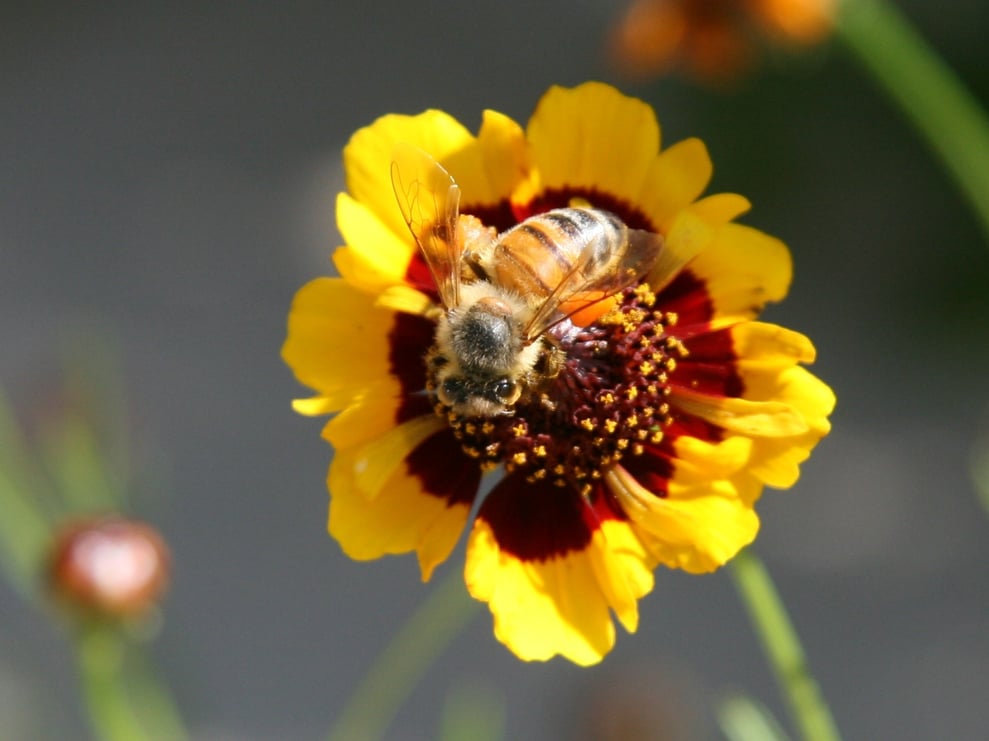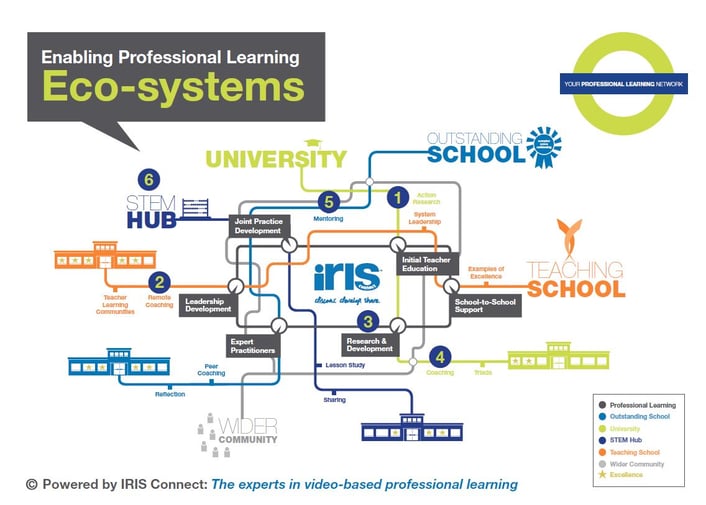Do you work in a silo? Do you collaborate? Do you share and grow?
The answer is probably ‘No’ to the first and a conditional ‘Yes’ to the other two. The profession has moved on a very long way since I started teaching. Yes, OK, I admit it was a long time ago but not exactly the dark ages. One of the first things I did as a young teacher was to put a ‘display’ across my classroom window so no one could see in – my classroom was my kingdom.
But, thankfully, things have moved on and the growth in collaboration has been driven by both opportunities offered by technology and a deeper understanding of the value of collaborative working.

There has been massive growth in teachers interacting through Twitter; sharing their experiences, thoughts and sentiments with other teaching professionals. Teachers are also blogging and sharing within the whole education community and this is often of an incredibly high standard. All of this has helped the profession to move beyond the walls of individual institutions to embrace the wider community of educational professionals.
There has been a growth in Teacher Learning Communities/Professional Learning Communities focussing on the various forms of Collaborative Enquiry. It is evident that more professionals are seeing both the point of collaboration and the value of it.
Andy Hargreaves and Michael T O’Connor recently published the report ‘Collaborative Professionalism’, an excellent paper that will help to move the discussion beyond ‘professional collaboration’ to what it means to be a ‘collaborative profession’ where accountability is not externally imposed but becomes the responsibility of the profession itself.
“Teaching quality also improves within a collegial, collaborative environment ... the power of the collective capacity is that it enables ordinary people to accomplish extraordinary things” - Michael Fullan
From professional collaboration to collaborative professionalism
Could it be that that the desire of Hargreaves and O’Connor is reaching fruition?
“The inspiring future of school improvement is the fear factor giving way to the peer factor” - Hargreaves and Shirley, 2009
Certainly, there is growing evidence that collaborative working, sometimes described in terms of building social capital, has a massive impact.
John Hattie identifies ‘collaborative teacher efficacy’ (the skills and knowledge of the whole group rather than the individual teacher) as critically important for pupil outcomes as having an amazing 1.47 effect size.
In 2011 Carrie Leana’s research suggested that where ‘social capital’ has been developed in and across staff groups it is a significant predictor of student achievement gains above and beyond teacher experience or ability in the classroom;
“.. and the effects of teacher social capital on student performance were powerful. If a teacher’s social capital was just one standard deviation higher than the average, her student’s maths scores increased by 5.7%”
Collaborative working is not a fancy: It is evidence-based and does improve outcomes and has even wider economic benefits too.
The wider benefits
In November of this year, the DFE published ‘TALIS, 2017: Working Conditions, Teacher Job Satisfaction and Retention’. This took a while for them to write but it does include some fascinating insights.
“Taken together, these findings highlight the importance of the more interpersonal aspects of working conditions, such as leadership and teacher co-operation to reduce teacher turnover”.
In April of 2016 we ran a collaborative conference with Cambridge University on the theme of ‘Recruit, Train, Develop and Retain’. This was a lively event and one key message to emerge was we should ‘stop filling the barrel and start repairing it’.
Central to repairing the barrel was developing professional efficacy by releasing the knowledge, skills and passion that exist within the profession and enabling collaboration and collective learning. Again, this report is well worth a read.
Educational ecosystems
If you are largely in agreement with the importance of improving levels of collaboration within the profession, let me push this a bit further.
I have always been an admirer of John Donne’s poetry and one of my favourites extracts is:
“No man is an island,
Entire of itself,
Every man is a piece of the continent,
A part of the main …”
No teacher teaches in isolation. Pupils are influenced by parents, other teachers, their department, the staff room. All of this is pretty explicit. But, I would argue it goes much wider than that. Teachers are part of an educational ‘ecosystem’.
What is an ecosystem?
An ‘ecosystem’ can be described as a ‘community network of interactions between organisms and their environment’. Yes, this sounds like a slightly pompous way of describing a ‘network’ but what it highlights are the interactions that go on to influence and nourish what actually happens in the classroom.
I was recently at the Eminent Conference in Brussels organised by the European SchoolNet, called ‘Learning, Space, Time and Ecosystems’. I had taken along a poster showing how IRIS Connect could help to enable ecosystems. I spent a fascinating couple of hours discussing how we should be helping schools and teachers to map their own ecosystems.
One colleague from the Finnish Ministry described the journey of lifting eyes beyond the classroom to embrace the school and on into other schools and that now she was coming up with models to help them map the wider ecosystem and how they fitted in. What surprised her was that very few schools had done this in a methodological manner.
The value of the work she was doing was helping schools make explicit what was implicit and helping them see the wider world that influenced them. In her view, as a consequence the schools (and teachers) started to be much more proactive in exploiting collaborative networks.

A good gardener understands the ecosystem that makes the garden flourish
At the highest level, the Government should pay more attention and respect to those parts of the system that nurture the education system as a whole and makes it flourish.
We can also do this at a school level and it helps to have a map of how it all works together. You can start in a small way by asking NQTs to map their own ecosystem of support. Departments can do it too, or even whole schools.
When we started IRIS Connect we designed it to enable the whole range of interactions necessary for effective adult learning and amongst these is facilitating collaboration within schools, between schools and other institutions – that is a key and unique part of the IRIS Connect system.
We are involved in a number of exciting and ground breaking projects including one that will link 60 universities and associated schools across Europe. Advanced and secure cloud-based platforms make this so much easier whether within a school, across schools or across institutions.
A few years ago we did an exercise using the model of the underground system to illustrate how schools interact more widely. If you make your own map you may be surprised how much support there really is, how it can help you plan your own journey of improvement and what support there is to help you. It would be great to hear back on your own experience of mapping your ecosystem – feel free to use the Underground model and if you come up with a better one, please let us know.




Leave a comment:
Get blog notifications
Keep up to date with our latest professional learning blogs.